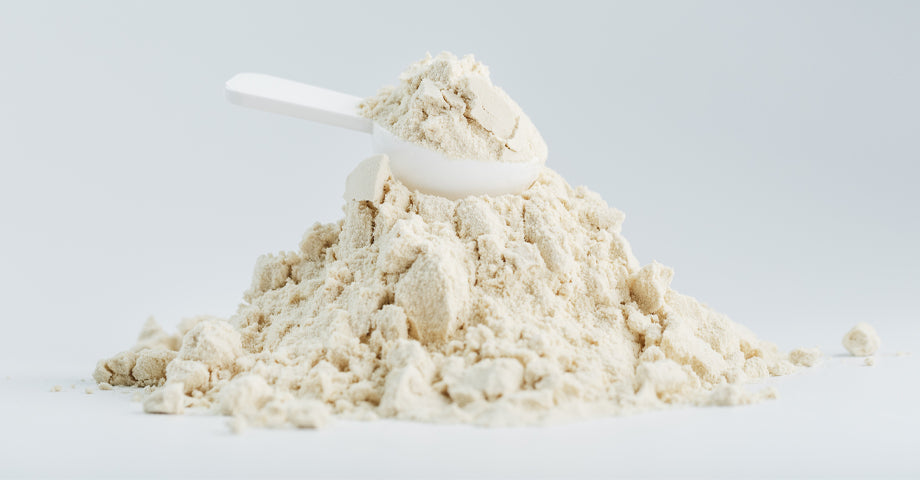What is Candidiasis?
Candidiasis is an infection caused by a species of the yeast Candida, most commonly Candida albicans. There are over 200 species of Candida existing in nature but only a few species have been associated with disease in humans, these include:• C albicans, the most common species identified (50-60%)
• Candida glabrata (previously known as Torulopsis glabrata) (15-20%)
• C parapsilosis (10-20%)
• Candida tropicalis (6-12%)
• Candida krusei (1-3%)
• Candida kefyr (<5%)
• Candida guilliermondi (<5%)
• Candida lusitaniae (<5%)
• Candida dubliniensis, primarily recovered from patients infected with HIV
What is Candida Albicans?
Candida albicans is pathogenic yeast, which belongs to the fungus family. Candida is present in most people but its population is controlled by our immune system and competition with other organisms. Candida albicans can overpopulate and become a problem when the competition is reduced (e.g. after antibiotics) and / or the immune system is suppressed or if they are overfed (e.g. high sugar diet). As candida colonizes and overpopulates it evolves, grows and spreads. It can grow by budding (refer to the budding yeast pictured below), and can form true hyphae or pseudohyphae and treatment resistant spores called chlamydospores.The conversion from the yeast form to the hyphal form has been associated with increased virulence and mucosal invasiveness. The Hyphal forms of candida have the ability to invade the membrane and allow for local and systemic infection (as seen in the image below). Chlamydospores are treatment resistant spores that can be a cause of recurrent infections.



Where does candida come from?
Candida species are usually confined to humans and animals. They are commonly found living on the skin and mucosal membranes of the gastrointestinal, genitourinary, and respiratory tracts in most people. They are frequently recovered from the environment, including on foods, in dirt, on floors, countertops, air-conditioning vents, floors, respirators, and especially hospitals.Candida can colonize and infect most membranes of the body including the digestive system and gut wall (from the mouth and esophagus to intestine, including the liver and spleen), skin, respiratory tract (including sinus, throat and lungs), reproductive tract and urinary tract in males and females.
Why me?
The following factors will increase your risk of infection.
- Hosts receiving antibiotic treatment
- Immunocompromised states such as AIDS
- Immune suppressant drugs
- Regular use of cortisone-type drugs
- Occasionally in apparently healthy persons elevated populations can pose a significant risk
- Oestrogen dominance
- Diabetes mellitus
- High sugar diet
- Oral contraceptives, Oestrogen therapy, hormone replacement therapy
- Pregnancy
- Tight clothing
- Frequent sexual intercourse
- Spermicide use
- Humidity
- Eating disorders (starvation, vomiting, taking laxatives)
- Hospitalisation
- Surgery
- Organ transplant
- Catheterisation
- Surgical procedures to replace valves, joints, and organs
- Poor oral hygiene
- Dentures
Types of infection
Gastrointestinal tract candidiasisOropharyngeal candidiasis (oral thrush)
What are the Symptoms? Patients are frequently asymptomatic. However, symptoms may include:
- Sore and painful mouth
- Burning mouth or tongue
- Dysphagia
- Whitish thick patches on the oral mucosa
- Membranous candidiasis: This is one of the most common types and is characterized by creamy-white curdlike patches on the mucosal surfaces.
- Erythematous candidiasis: This is associated with an erythematous patch on the hard and soft palates.
- Chronic atrophic candidiasis (denture stomatitis): This type is also thought to be one of the most common forms of the disease. The presenting signs and symptoms include chronic erythema and edema of the portion of the palate that comes into contact with dentures.
- Angular cheilitis: An inflammatory reaction, this type is characterized by soreness, erythema, and fissuring at the corners of the mouth.
- Mixed: A combination of any of the above types is possible.
Esophageal candidiasis
What are the symptoms? Patients may be asymptomatic However symptoms may include:- Dysphagia
- Odynophagia
- Retrosternal pain
- Epigastric pain
- Nausea and vomiting
- Physical examination may reveal oral candidiasis, however normal oral mucosa is present in >50% of patients.

Nonesophageal gastrointestinal candidiasis - candidiasis of the stomach, small intestine and large intestine.
The esophagus is the most commonly infected site, however it can infect the stomach, small and large intestine. Approximately 15% of these patients develop systemic candidiasis. It has also been associated with irritable bowel syndrome (IBS) and inflammatory bowel diseases such as Cohn’s disease and ulcerative colitis.What are the symptoms? This can be hard to diagnose as patients may be asymptomatic and physical examination findings vary depending on the site of infection and the diagnosis cannot be made solely on culture results because approximately 20-25% of the population is colonized by Candida. The following symptoms may be present:
- Epigastric pain
- Nausea and vomiting
- Abdominal pain
- Fever and chills
- Abdominal mass (in some cases)
Respiratory tract candidiasis


Laryngeal candidiasis:
What are the symptoms? The patient may present with a sore throat and hoarseness. The physical examination findings are generally unremarkable, and the diagnosis is frequently made with direct or indirect laryngoscopy.
Candida tracheobronchitis:
What are the symptoms? Most patients with Candida tracheobronchitis report fever, productive cough, and shortness of breath. Physical examination reveals dyspnea and scattered rhonchi. The diagnosis is generally made with bronchoscopy.
Candida pneumonia:
What are the symptoms? Usually associated with other candidiasis along with reports of shortness of breath, cough, and respiratory distress. Physical examination reveals fever, dyspnea, and variable breathing sounds.
Genito-urinary tract candidiasis
Vulvovaginal candidiasis (Vaginal thrush):
What are the symptoms? The patient's history includes vulvar pruritus, vaginal discharge, dysuria, and dyspareunia. Physical examination findings include a vagina and labia that are usually erythematous, a thick curd like discharge, and a normal cervix upon speculum examination.Candida balanitis: Patients report penile pruritus along with whitish patches on the penis. Candida balanitis is acquired through direct sexual contact with a partner who has vaginal thrush. Physical examination initially reveals vesicles on the penis that later develop into patches of whitish exudate. The rash occasionally spreads to the thighs, gluteal folds, buttocks, and scrotum.
Candida cystitis: Many patients are asymptomatic. However, bladder invasion may result in frequency, urgency, dysuria, hematuria, and suprapubic pain. Candida cystitis may or may not be associated with the use of a catheter. Physical examination may reveal suprapubic pain; other findings are unremarkable.
Asymptomatic candiduria: Most catheterised patients with persistent candiduria are asymptomatic, similar to non-catheterised patients. Most patients with candiduria have easily identifiable risk factors for Candida colonization. Thus, invasive disease is difficult to differentiate from colonization based solely on culture results because approximately 5-10% of all urine cultures are positive for Candida.
Ascending pyelonephritis: The use of stents and indwelling devices, along with the presence of diabetes, is the major predisposing risk factor in ascending infection. Most patient report flank pain, abdominal cramps, nausea, vomiting, fever, chills and hematuria. Physical examination reveals abdominal pain, costovertebral-angle tenderness, and fever.
Fungal balls: This is due to the accumulation of fungal material in the renal pelvis. The condition may produce intermittent urinary tract obstruction with subsequent anuria and ensuing renal insufficiency.



Systemic candidiasis
Systemic candidiasis can be divided into 2 major subtypes: candidemia and disseminated candidiasis (organ infection by Candida species). They are usually described as a nosocomial infection, which means hospital-acquired or healthcare associated infections e.g. after organ transplant, catheters, valves etc. In more recent years, several serious forms of deep organ candidiasis such as renal (kidney) candidiasis, hepatic (liver) and splenic (spleen) candidiasis has become more common. This is possibly due to overuse of antibiotics, the rise of AIDS, the increase in organ transplantations, and the use of invasive devices (such as catheters, artificial joints and valves), which increase a patient's susceptibility to infection.Hepatosplenic candidiasis (chronic systemic candidiasis) is a form of systemic candidiasis infecting the liver and spleen.
- Fever unresponsive to broad-spectrum antimicrobials
- Right upper quadrant pain
- Abdominal pain and distension
- Jaundice (rare)
- Physical examination findings include right upper quadrant tenderness and hepatosplenomegaly (<40%).
Eye infections
Candida endophthalmitis is usually accidental or iatrogenic (postoperative) injury of the eye and inoculation of the organism from the environment, however candida can infect the eye as a complication of systemic candida infection.What are the symptoms? It is often asymptomatic, but may manifest as
- Ocular pain
- Photophobia
- Scotomas
- Floaters
- Physical examination reveals fever.
- Funduscopic examination reveals early pinhead-sized off-white lesions in the posterior vitreous with distinct margins and minimal vitreous haze. Classic lesions are large and off-white, similar to a cotton-ball, with indistinct borders covered by an underlying haze. Lesions are 3-dimensional and extend into the vitreous off the chorioretinal surface. They may be single or multiple.
Central nervous system (CNS) infections
CNS infections due to Candida species are rare and difficult to diagnose but may be associated with the following conditions.- Meningitis
- Granulomatous vasculitis
- Diffuse cerebritis with microabscesses
- Mycotic aneurysms
- Fever unresponsive to broad-spectrum antimicrobials
- Mental status changes
- Fever
- Nuchal rigidity
- Confusion
- Coma
- Candida arthritis, osteomyelitis, costochondritis, and myositis
Candidal musculoskeletal infections
Were once uncommon; recently, they have become much more common, possibly due to the increased frequency of systemic candidiasis. The most common sites of involvement continue to be the knee and the vertebral column.
Candida peritonitis can occur after gastrointestinal tract surgery, viscous perforation, or peritoneal dialysis.
Candidiasis of the gastrointestinal tract and respiratory tract has also been associated with some more generalised symptoms such as:
- Food Allergies - Candida has been shown to increase intestinal permeability and increase food sensitivities and intolerances, including yeast intolerance.
- Atopic dermatitis and Diaper Rash - Candida may aggravate dermatitis due to its ability to increase allergic inflammation and intestinal permeability.
- Reduced learning ability – Candida overpopulation has been associated with symptoms described as “foggy brain”, poor concentration span and reduced learning ability.
- Fatigue
N.B. This is for your information only. It is not designed to diagnose or treat.
We recommend you seek professional advice and guidance throughout an anti-candida program.
References:
i Kubo I, Fujita K, Lee SH. Antifungal mechanism of polygodial. J Agric Food
Chem. 2001 Mar;49(3):1607-11. PubMed PMID: 11312903.
ii Nakajima J, Papaah P, Yoshizawa M, Marotta F, Nakajima T, Mihara S, Minelli E.
Effect of a novel phyto-compound on mucosal candidiasis: further evidence from an
ex vivo study. J Dig Dis. 2007 Feb;8(1):48-51. PubMed PMID: 17261135.
iii Fujita K, Kubo I. Multifunctional action of antifungal polygodial against
Saccharomyces cerevisiae: involvement of pyrrole formation on cell surface in
antifungal action. Bioorg Med Chem. 2005 Dec 15;13(24):6742-7. Epub 2005 Aug 24.
PubMed PMID: 16122929.
iv Machida K, Tanaka T, Taniguchi M. Depletion of glutathione as a cause of the
promotive effects of polygodial, a sesquiterpene on the production of reactive
oxygen species in Saccharomyces cerevisiae. J Biosci Bioeng. 1999;88(5):526-30.
PubMed PMID: 16232656.
v Metugriachuk Y, Kuroi O, Pavasuthipaisit K, Tsuchiya J, Minelli E, Okura R,
Fesce E, Marotta F. In view of an optimal gut antifungal therapeutic strategy: an
in vitro susceptibility and toxicity study testing a novel phyto-compound. Chin J
Dig Dis. 2005;6(2):98-103. PubMed PMID: 15904429.
vi Kubo I, Himejima M. Potentiation of antifungal activity of sesquiterpene
dialdehydes against Candida albicans and two other fungi. Experientia. 1992 Dec
1;48(11-12):1162-4. PubMed PMID: 1473583.
vii Chassot F, Negri MF, Svidzinski AE, Donatti L, Peralta RM, Svidzinski TI,
Consolaro ME. Can intrauterine contraceptive devices be a Candida albicans
reservoir? Contraception. 2008 May;77(5):355-9. Epub 2008 Mar 19. PubMed PMID:
18402852.

















